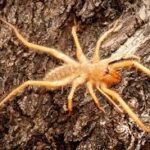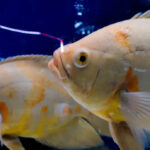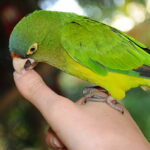Honey bees are fascinating creatures that play a crucial role in pollination, which is vital for the production of many fruits, vegetables, and nuts. Understanding the different bee types can help you appreciate their diversity and their importance in agriculture and the environment. This guide will provide a detailed overview of various bee types, their characteristics, and their roles within the hive and ecosystem.
Table of Contents
Introduction
Bees are more than just producers of honey; they are essential to our ecosystem and agriculture. With over 20,000 species of bees, only a few are classified as bees. These bees are known for their ability to produce and store honey and build complex hives.
The Importance of Bees
Bees are indispensable to our food system. They are responsible for pollinating about one-third of the food crops we consume. Without them, we would face a significant decrease in the availability of fruits, vegetables, nuts, and seeds. Their role in pollination is critical not only for food production but also for maintaining biodiversity in our ecosystems.
Types of Honey Bees
Western Bee (Apes mellifera)
The Western Bee, also known as the European bee, is the most common and widespread honey bee species. It is known for its adaptability to various climates and environments. This species is primarily used in commercial honey production and pollination.
Characteristics
- Size: Medium
- Color: Typically golden with brown bands
- Temperament: Generally gentle, making them suitable for beekeeping
- Habitat: Found worldwide, particularly in Europe, the Americas, and Australia
Eastern Honey Bee (Apis cerana)
The Eastern Bee is native to southern and southeastern Asia. It is similar in appearance to the Western bee but smaller and more adapted to the tropical climates of Asia.

Characteristics
- Size: Smaller than Apis mellifera
- Color: Darker with more pronounced stripes
- Temperament: More defensive than Apis mellifera
- Habitat: Predominantly in Asia
Giant Honey Bee (Apes dorsa)
The Giant Bee is one of the largest honey bee species. Native to South and Southeast Asia, these bees build large, exposed nests on tree limbs and cliffs.
Characteristics
- Size: Large
- Color: Black with white bands
- Temperament: Highly defensive
- Habitat: Forested areas in South and Southeast Asia
Dwarf Honey Bee (Apis florea)
The Dwarf Bee is the smallest of the honey bee species. They are also native to South and Southeast Asia and are known for building small, single-comb nests in bushes and trees.
Characteristics
- Size: Small
- Color: Light-colored with thin bands
- Temperament: Generally gentle
- Habitat: Tropical and subtropical regions of Asia
Honey Bee Roles within the Hive
Queen Bee
The queen bee is the heart of the hive. She is the only reproductive female and is responsible for laying all the eggs in the colony. Her pheromones help maintain the social structure of the hive.
Characteristics
- Size: Largest bee in the hive
- Role: Lays eggs and regulates the hive’s activities
- Lifespan: Can live up to 5 years
Worker Bees
Worker bees are non-reproductive females that perform various tasks to maintain the hive. These tasks include foraging for nectar and pollen, feeding the queen and larvae, and protecting the hive.
Characteristics
- Size: Medium
- Role: Various tasks including foraging, nursing, and hive maintenance
- Lifespan: Typically 6 weeks in summer, longer in winter
Drone Bees
Drone bees are the male bees whose primary role is to mate with a virgin queen. They do not have stingers and do not participate in hive maintenance or foraging.
Characteristics
- Size: Larger than workers but smaller than the queen
- Role: Mating with the queen
- Lifespan: Typically a few weeks during mating season
Honey Bee Behavior
Communication
Bees communicate through a combination of pheromones and the famous “waggle dance.” This dance is performed by foraging bees to inform others about the location of food sources.
Swarming
Swarming is a natural part of the honey bee lifecycle. It occurs when the colony becomes too large, and the old queen leaves with a portion of the bees to establish a new hive. This process is crucial for the propagation of the species.
Foraging
Foraging bees leave the hive in search of nectar and pollen, which are vital for the colony’s survival. They have an incredible ability to navigate and remember the locations of flowers.

Conservation and Protection
Bees face numerous threats, including habitat loss, pesticides, and diseases like Varroa mites. Conservation efforts are critical to protect these essential pollinators. Planting bee-friendly gardens, reducing pesticide use, and supporting local beekeepers are ways to help conserve honey bee populations.
Ecological Significance
To delve deeper into the fascinating world of bee types, we need to explore more specific attributes and behaviors that distinguish these bees, as well as their unique contributions to ecosystems and agriculture. This additional analysis will also cover emerging research on honey bee genetics, behavior, and the broader implications of their conservation.
Behavioral Analysis
Foraging and Navigation
Bees exhibit remarkable foraging behaviors that are crucial for pollination. Western Bees (Apes mellifera), for instance, can travel up to six miles in search of food. They use a combination of the sun’s position, polarized light patterns, and visual landmarks to navigate. Recent studies using harmonic radar and RFID tagging have provided deeper insights into their flight patterns and decision-making processes.
One particularly interesting discovery is the use of the waggle dance, which not only communicates the direction and distance of food sources but also conveys information about the quality of the food. This complex behavior demonstrates the sophisticated social structure of honey bee colonies and their ability to adapt to changing environmental conditions.
Thermoregulation
Giant Bees (Apes dorsa) are known for their impressive thermoregulatory behavior. In their large, exposed nests, these bees perform synchronized movements known as shimmering, which helps to deter predators and maintain optimal temperature conditions within the hive. This behavior is a prime example of how bees adapt to their specific environments, ensuring the survival of the colony under varying climatic conditions.
Genetic Diversity and Adaptation
The genetic diversity among honey bee types is a significant area of study, particularly in understanding how different species adapt to their environments and resist diseases. For instance, Eastern Honey Bees (Apis cerana) exhibit a high degree of resistance to the Varroa destructor mite, a parasite that devastates Western Honey Bee populations.
Research has shown that this resistance is partly due to the grooming behaviors of Apis cerana and their ability to detect and remove mites from their bodies. Additionally, their smaller brood cells make it harder for the mites to reproduce. These insights are crucial for developing strategies to protect Apis mellifera from similar threats.
Ecological and Agricultural Impacts
Honey bees contribute significantly to both natural ecosystems and agricultural productivity. In the United States alone, the pollination services provided by honey bees are valued at over $15 billion annually. Crops such as almonds, apples, blueberries, and cucumbers heavily rely on honey bee pollination.
Beyond their agricultural importance, honey bees support the biodiversity of plant species. By pollinating wild plants, they help maintain the health and diversity of ecosystems. This, in turn, supports other wildlife, from birds to mammals, that depend on these plants for food and habitat.
Conservation Challenges and Strategies
Despite their importance, honey bees face numerous threats that jeopardize their populations. Pesticides, particularly neonicotinoids, have been linked to bee declines by impairing their foraging ability and navigation. Habitat loss due to urbanization and intensive farming practices reduces the availability of forage plants and nesting sites.
Diseases and parasites, such as the Varroa destructor and Nosema fungus, further exacerbate the decline of honey bee colonies. To combat these issues, researchers and conservationists are developing integrated pest management strategies, breeding programs for mite-resistant bees, and advocating for policies that protect bee habitats.
Emerging Research and Future Directions
Emerging research focuses on improving honey bee health and resilience. One promising area is the development of RNA interference (RNAi) technologies to target and neutralize specific bee pathogens and parasites. Another innovative approach is the use of microbiome transplantation, where beneficial microbes from healthy bees are introduced to colonies affected by disease, enhancing their immunity and survival rates.
Moreover, understanding the epigenetics of honey bees—how environmental factors can influence gene expression without altering the DNA sequence—offers new perspectives on how bees adapt to stressors. This research could lead to the development of bee strains better suited to withstand environmental challenges.

Guide to Honey Bee Types
Honey bees are indispensable to both natural ecosystems and human agriculture. Their diverse types and behaviors reflect an intricate balance between adaptation and environmental interaction. By deepening our understanding of their genetics, behaviors, and ecological roles, we can develop more effective conservation strategies to ensure their survival. Supporting honey bee health not only secures our food supply but also maintains the ecological balance essential for a thriving planet. Whether through scientific research, conservation efforts, or individual actions like planting bee-friendly gardens, every effort counts in safeguarding the future of these vital pollinators.
Conclusion
Understanding the different honey bee types and their roles within the hive is crucial for appreciating their importance in our ecosystem. By learning about their behavior, habitat, and the threats they face, we can take steps to protect these vital pollinators. Whether you are a beekeeper, gardener, or simply a nature enthusiast, supporting honey bee conservation is essential for sustaining our food supply and maintaining biodiversity.






























































